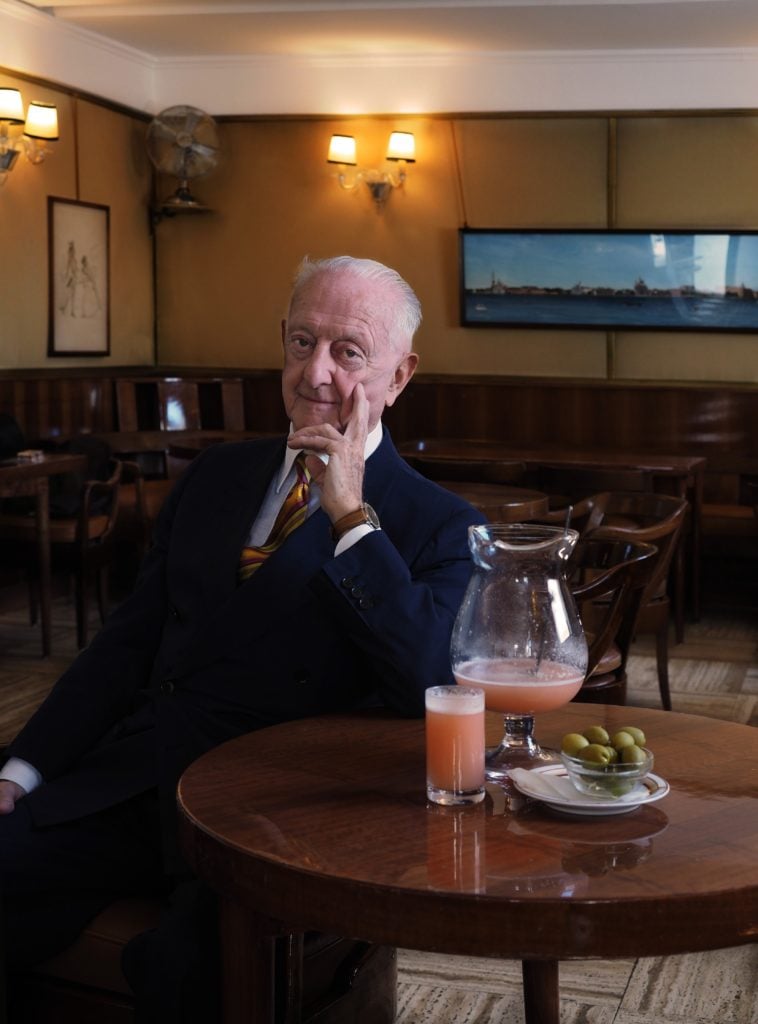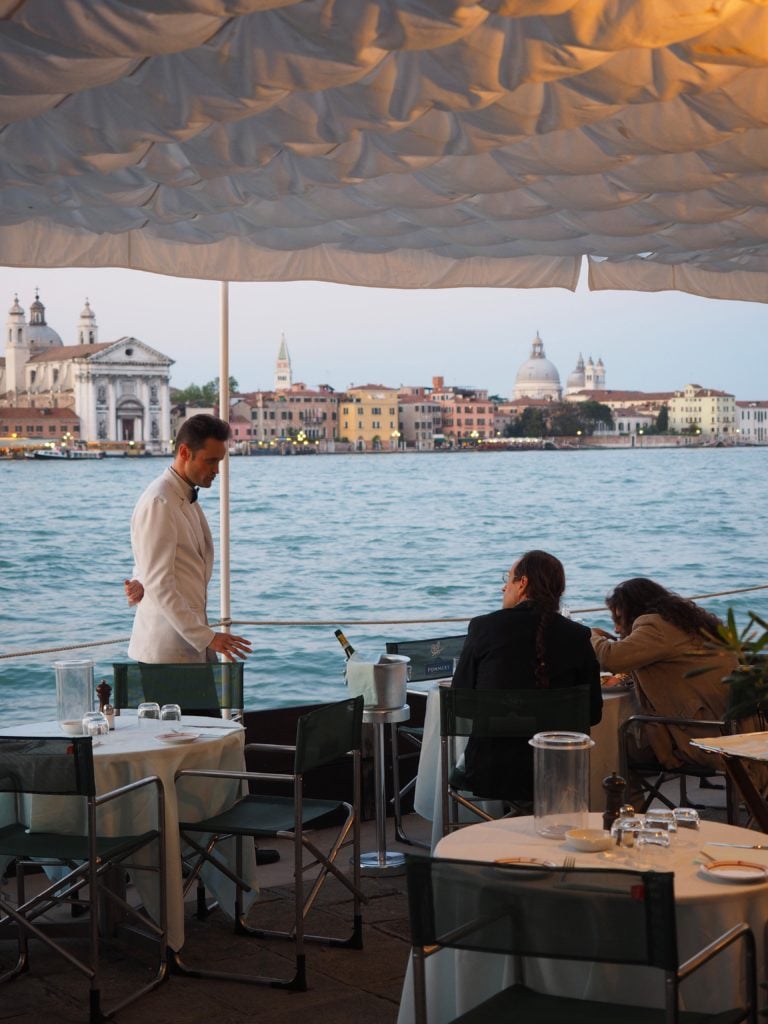Law & Politics
Art World Haunt Harry’s Bar Sues Venice Over Speeding Boats
Customers are getting splashed by waves kicked up by speeding powerboats.

Customers are getting splashed by waves kicked up by speeding powerboats.

Sarah Cascone

Venice’s revered Harry’s Bar is suing the city, complaining that speeding boats in the canals are kicking up waves that splash customers sipping the establishment’s famed bellini cocktail—said to be named after Italian Renaissance artist Giovanni Bellini.
A national landmark since 2001, Harry’s Bar is a historic art world waterhole—past customers include Frank Lloyd Wright and Peggy Guggenheim—still favored by industry insiders during the Venice Biennale. Founded in 1931 by Giuseppe Cipriani Sr., Harry’s Bar launched a culinary empire, with the family since opening 30 other bars and restaurants around the world.
But Giuseppe Cipriani’s son, 92-year-old Arrigo Cipriani, isn’t happy with the current state of affairs at the hospitality group’s second Venice location, Harry’s Dolci on the island of Giudecca.
“You do nothing against the wave motion [and] damage to the business of my Harry’s,” Cipriani told Corriere del Veneto. “More and more often, those sitting at Harry’s Dolci find themselves with wet feet due to the waves from the Giudecca canal, which are caused by boats whizzing by without respecting the speed limits.”

Harry’s Bar in Venice, Italy, in 1998. Photo by Leonardo Cendamo/Getty Images.
He argued that the city does nothing to penalize these powerboats that exceed city speed limits along the Giudecca canal. The wakes spill over onto the terrace outside Harry’s Dolci—which the business pays the city to use—soaking customers’ shoes, and angering locals and tourists alike.
This also creates an unsafe environment for smaller vessels, especially rowboats. There have been deadly accidents on the city’s waterways in the past, including a German tourist who died when a water taxi backed into his gondola and crushed him against the dock in 2013. A powerboat trying to set a speed record later crashed into an artificial reef in the lagoon, killing three people, in September 2019.
At Harry’s Dolci, Cipriani had tried to address the issue on his own, requesting permission from the city to put up a splash guard during business hours. Though the restaurant promised to create a barrier that would blend right in with the existing Istrian stone, Venetian authorities rejected the proposal as not in keeping with the canal city’s historic beauty.

Harry’s Dolci bar and restaurant on the island of Giudecca in Venice. Photo by Eddy Buttarelli/REDA&CO/UIG via Getty Images.
In January, the city’s transport committee approved an amendment to use barcavelox speed cameras to help fine those who go above the speed limit, which is 7 kilometers (4.3 miles) per hour in the large canals and 5 kilometers (3 miles) per hour in smaller waterways, versus 20 kilometers (12 miles) per hour in the lagoon. But it has yet to go into effect, having stalled in the senate.
Feeling himself left with no other choice, Cipriani has filed a lawsuit against Venice’s city council and port master’s office.
“The coast guard carries out deterrence and speed moderation of nautical traffic activities throughout the year,” Venice’s port master told the Guardian.
The impact of the waves from boats also stresses Venice’s aging buildings and canals. The city (after many years of trying) did ban large cruise ships in 2021, out of concern the massive vessels were eroding canals and damaging the city’s foundations.